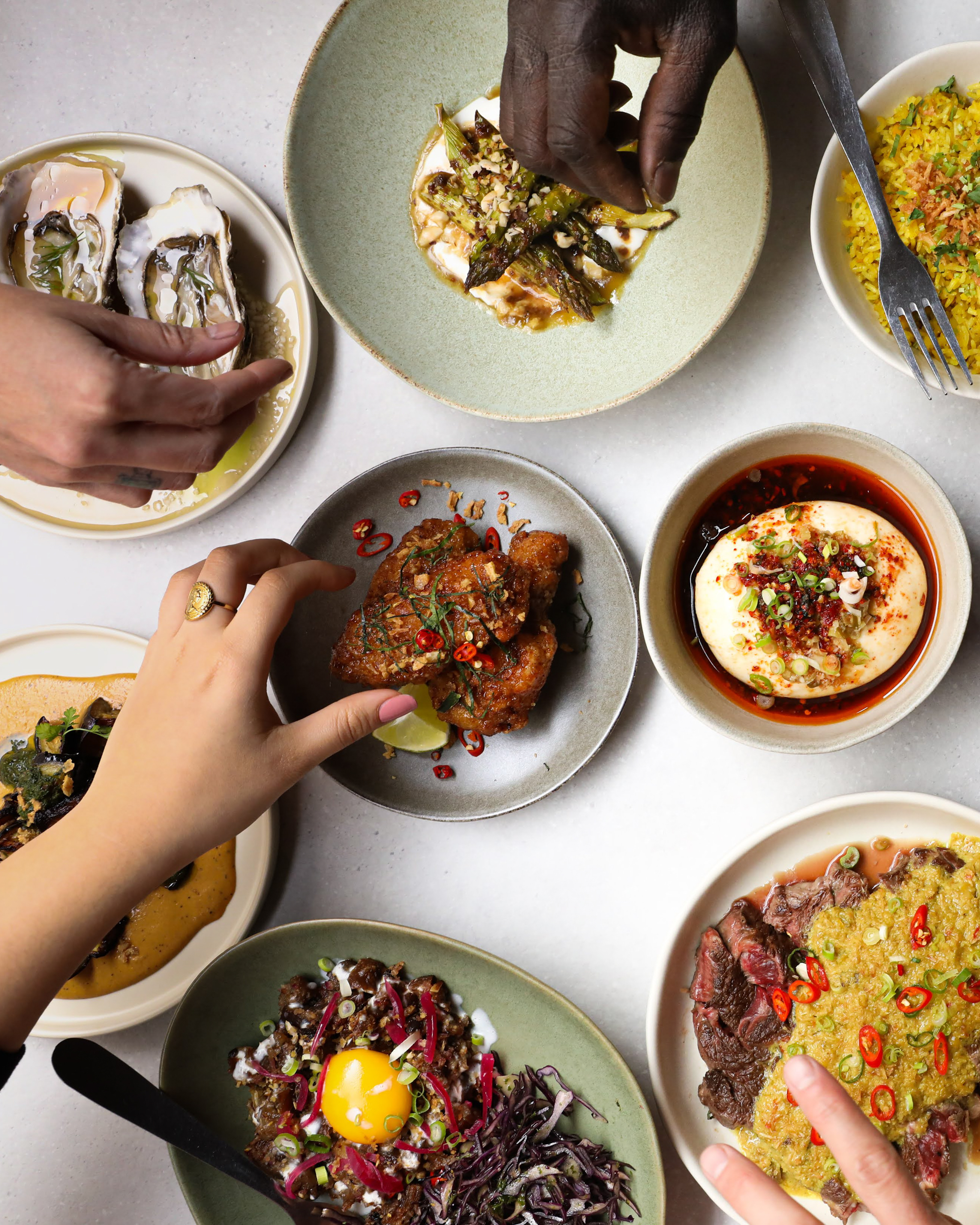Aurore Nguyen
A look into the Filipino’s need to feed.
We love our food. It goes beyond any physiological need, beyond the flavors and ingredients of Filipino cuisine. It extends to our cultural identity, our sense of community and belonging.
Beyond eating, we Filipinos have a compulsion to share our food—with anyone. The invitation “Kain tayo!” (Let’s eat!) has been programmed into our DNA so deeply that we automatically offer what we’re eating to anybody who approaches us, whether or not we have enough to go around.
Margarita Forés, or Chef Gaita to her friends, muses about what sets the Filipino’s relationship with food apart from the rest of the world. She says it goes way back to our pre-colonial history, before the Philippines became the Philippines.
According to Forés, our pre-colonial ancestors killed pigs and chickens to appease the spirits whenever calamity came upon them or when they would pray for safe sailing. They would gather around the table to eat the sacrifices together. There was a ceremonial aspect to these gatherings. The sharing of food was a sacred rite that strengthened the bonds of community among the people. In an article co-authored by scholar Queeny G. Lapeña, we can still see this in the rituals among the Ifugao and other indigenous communities up to this day.
In 1521, Italian scholar and explorer Antonio Pigafetta recorded what was the first meal shared by Europeans and the natives of the Visayas. In his journal, Pigafetta recounted when Magellan landed on the island of Homonhon, a balangay with nine men sailed over and welcomed his starved and sickly crew aboard, nourishing them with coconut, pork, rice, and a lot of wine.
“We ate with such ceremonies and with other signs of friendship. I ate meat on holy Friday, for I could not help myself,” Pigafetta wrote, even noting how one of his companions got intoxicated from all the feasting and drinking.
This tradition of gathering over food has been so ingrained in the our way of life that it never disappeared even in the invasions and occupations of foreign cultures that followed. Times have changed and our lives have gotten busier, but there are still Sunday lunches with family and other special occasions that call for groaning tables. Filipinos living in and out of the Philippines can attest to this. Next generation immigrant children grow up on the food of their parents and they, in turn, cook it for others.
Case in point, the growing popularity of boodle fights in the diaspora. Restaurants like the now-closed Jeepney in NYC to the newly-opened Reyna in Paris have introduced kamayan, the pre-colonial tradition of eating with your hands, to the global food scene. Even non-Filipinos are invited to a communal table where mounds of steamed rice and grilled viands are piled over a spread of banana leaves.
Pride & Filipino Food
Margarita Forés feels strongly about food. She may be known for her Italian cooking, but she is passionate about making Filipino cuisine famous. She talks about the ingredients, how dishes come together, and what we can do to share more of it with the world. Her family moved to New York during Martial Law, but they still ate Filipino fare every day, albeit using American produce. She fondly recalls her grandmother’s cooking when they spent weekends with them in their home in Westchester County in upstate New York.
“My grandmother had a magnetic personality. She would go to the fishmongers and ask for the salmon heads they were just throwing away. And she would make sinigang out of the salmon heads she got for free!” she says. “She also made beautiful adobo. I learned how to cook lamb adobo from her.”
The young Margarita had no angst about our food’s pungent aromas during her teen years. In fact, she says, in the late 1970s, she and her friend brought lumpiang Shanghai and pancit to Studio 54 to bribe the famously selective doorman Marc Benecke to let them in. And it worked.
If Filipino food had been good enough to open the doors of Studio 54 then, why did the rest of the world take so long to embrace our cuisine? Does it even matter if our cuisine is recognized or not?
For Chef Gaita, of course it is important. She and fellow chefs and writers have even worked hard on the first editions of Kulinarya: A Guidebook to Philippine Cuisine, which sought to standardize the recipes of Filipino dishes for people around the world. She delights in young chefs abroad being recognized for their culinary roots—even getting the first Michelin stars for Filipino cuisine. Finally, the world is paying attention.
“To fully understand and appreciate Filipino food in context, one must consider the importance of hospitality and generosity—two of the most universal aspects of Filipino culture,” wrote Amy Besa in her cookbook Memories of Philippine Kitchens. “Filipinos are truly the most giving, open, embracing, sentimental, and maddeningly hospitable people I’ve ever known.”
Besa was one of the first migrants to bring Filipino food out of the enclaves and into the mainstream when she and Romy Dorotan opened Cendrillon, a fancy Filipino restaurant in New York City that ran from 1995 to 2009.
At the end of the day, it’s about inviting the rest of the world to our boodle fight, to our fiesta, to our party, to our table.
This story was originally published in Vogue Philippines’ October 2022 Issue. Subscribe now.
- u003cpu003eu003ca href=u0022https://vogue.ph/lifestyle/passion-food-3-filipino-chefs-find-inspiration-in-butuan/u0022 target=u0022_blanku0022 rel=u0022noopeneru0022u003ePassion Food: 3 Filipino Chefs Find Inspiration In Butuanu003c/au003eu003c/pu003e
- Inside Filipino Restaurant Abacá, Recognized As One Of The Best In The US
- u003cpu003eu003ca href=u0022https://vogue.ph/lifestyle/toyo-eatery-brings-filipino-identity-to-the-haute-dining-scene-minus-the-hells-kitchen-antics/u0022 target=u0022_blanku0022 rel=u0022noreferrer noopeneru0022u003eToyo Eatery Brings Filipino Identity To The Haute Dining Scene, Minus The Hell’s Kitchen Anticsu003c/au003eu003c/pu003eu003cpu003eu003c/pu003e
- u003cpu003eu003ca href=u0022https://vogue.ph/lifestyle/an-ode-to-the-motherland-filipino-cuisine-takes-on-the-global-stage/u0022 target=u0022_blanku0022 rel=u0022noreferrer noopeneru0022u003eAn Ode To The Motherland: Filipino Cuisine Takes On The Global Stageu003c/au003eu003c/pu003e
